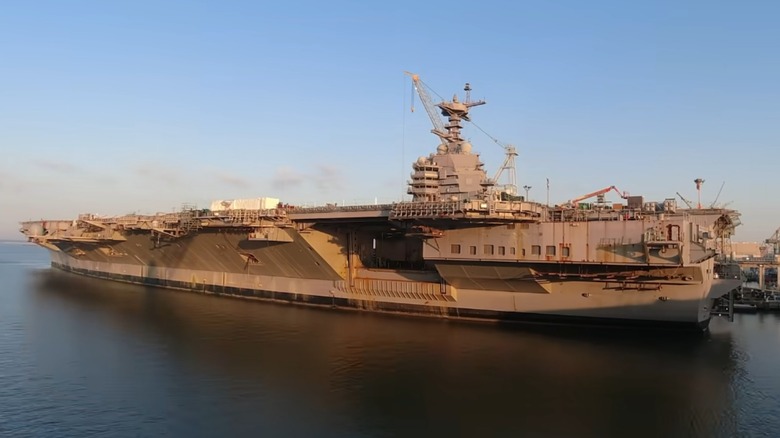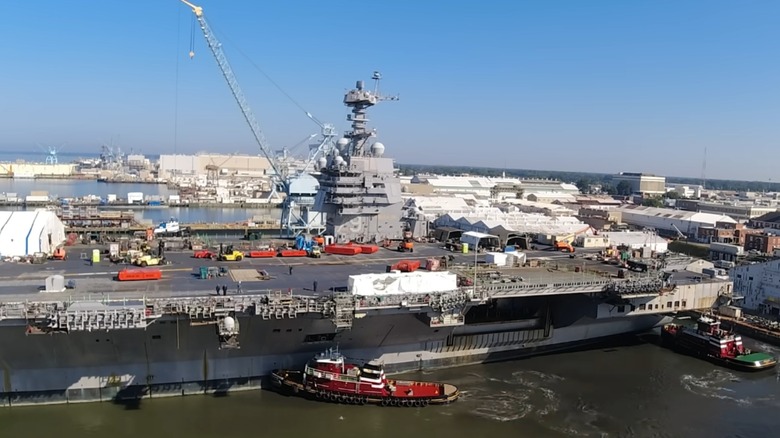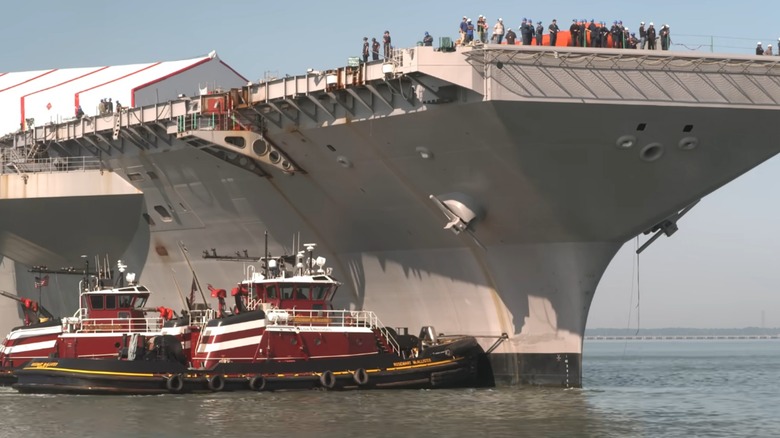The US Navy's Next Nuclear Supercarrier Just Took A Big Leap Forward
U.S. Navy aircraft carriers with the CVN designation have been a cornerstone of the country's defense strategy ever since the Cold War. Like all military technology, these kinds of vessels have continued to advance and evolve over time. There are currently 10 of these Nimitz-class carriers in commission, but these older ships are reaching the end of their life cycle. The oldest nuclear flattop on the water, the USS Nimitz, is scheduled to be retired in the next year, and a new carrier will have to leave its shipyard and take the place of its aging predecessor.
The military is now working on launching the next generation of carriers, which have been dubbed the Ford Class. This has been a long and arduous process. The first of these ships, the USS Gerald R. Ford, is currently considered the most advanced aircraft carrier in the world. It took a full 12 years to assemble, but it is now finally fully operational and being used for active service in the Mediterranean Sea. The second Ford-class ship, the USS John F. Kennedy, has experienced some delays due to pandemic-related issues that limited access to materials, but it's close to being finished. In early October 2025, it took a big leap forward when it performed its first nuclear propulsion tests in the James River in Virginia.
The USS John F. Kennedy is being constructed differently than prior carriers
The USS Ford was constructed similarly to how most other carriers have been built in the past. First, shipbuilders start at the bottom of the ship and work their way up, assembling the inner bottoms and side shells. This method is tried and true, but it's also slow. The USS John F. Kennedy, on the other hand, is trying a new method called modular construction.
In this technique, the ship's compartments are manufactured off-site before being transported to the shipyard for installation. Then, smaller parts are welded together to form large structures called "superlifts." The idea is that a big portion of construction can occur on land before the vessel gets lifted into a dry dock.
This new method of construction requires a lot of teamwork, cooperation, and communication among several different teams of shipbuilders who have been bringing the USS Kennedy together. They need to be able to coordinate the assembly on a massive scale, as you can see in the video above, as it's paramount that everything is installed correctly and able to function cohesively.
Shipbuilders are also adding new features to the USS Kennedy
The USS John F. Kennedy is now nearing its completion. There have been some setbacks related to the Advanced Arresting Gear (AAG) and the Advanced Weapons Elevators (AWE) systems, but the modular construction method has proven to cut time and cost to the ship's overall assembly. It also seems that these delays have given the team time to add several new benefits to the design.
In addition to the nuclear propulsion tests that are performed to check its power system, the aircraft carrier is also undergoing several other tests to check its seaworthiness. For one, its Post-Shakedown Availability (PSA) strategy was adjusted to add some modifications that make it more efficient before its maiden voyage. These adjustments should allow the carrier to arrive with fewer additions that need to happen post-delivery. Additionally, shipbuilders are also putting in some "adaptations for the F-35C Lightning II and the upgraded Enterprise Air Surveillance Radar," according to The National Interest.


